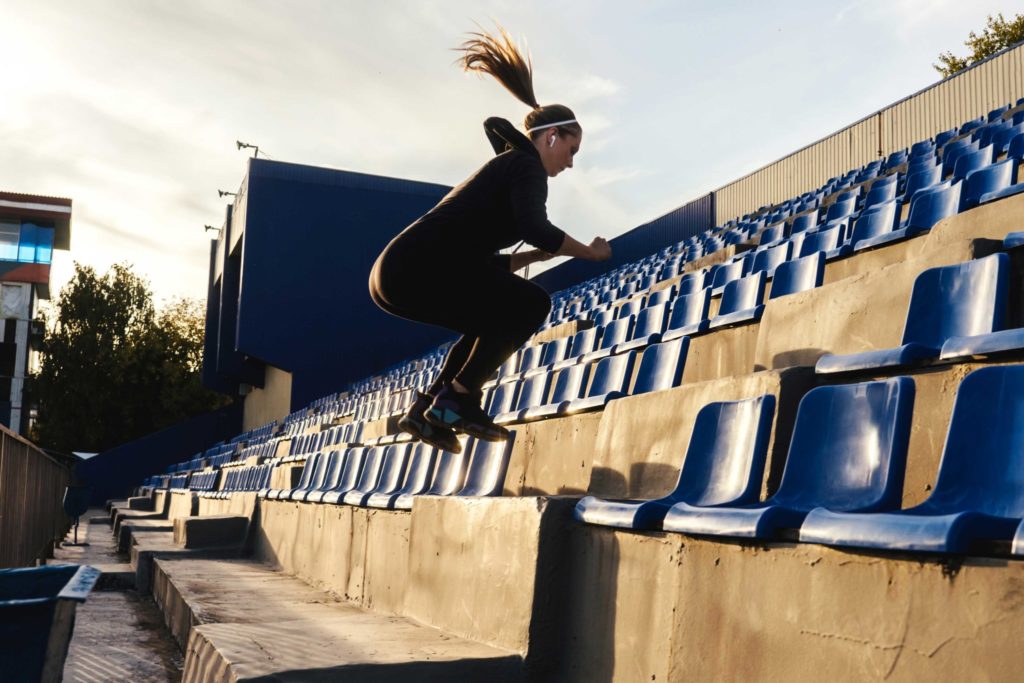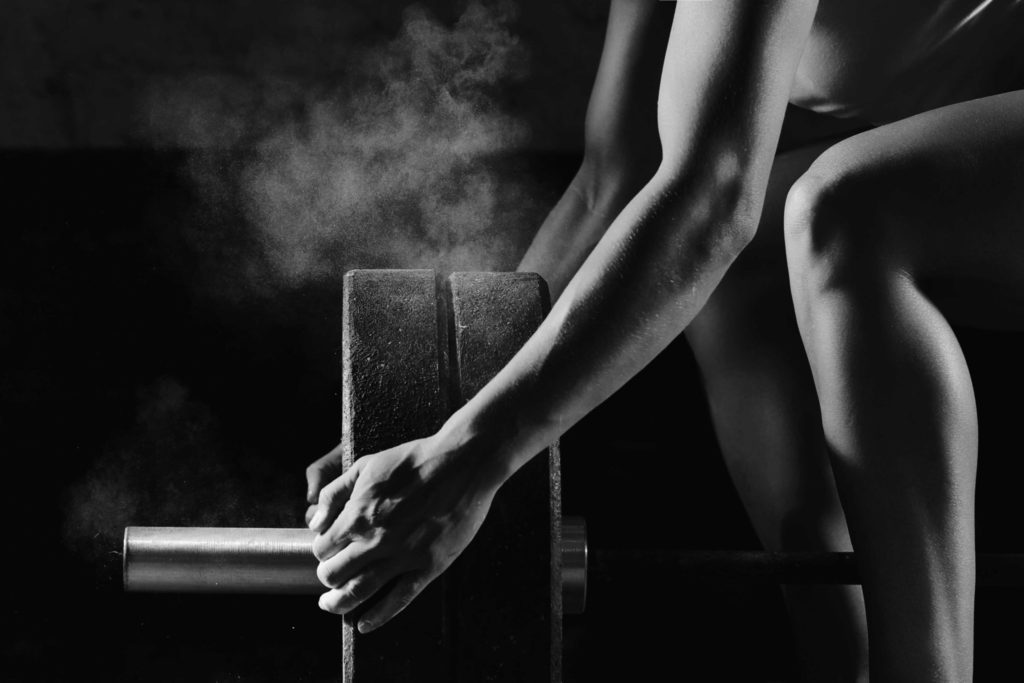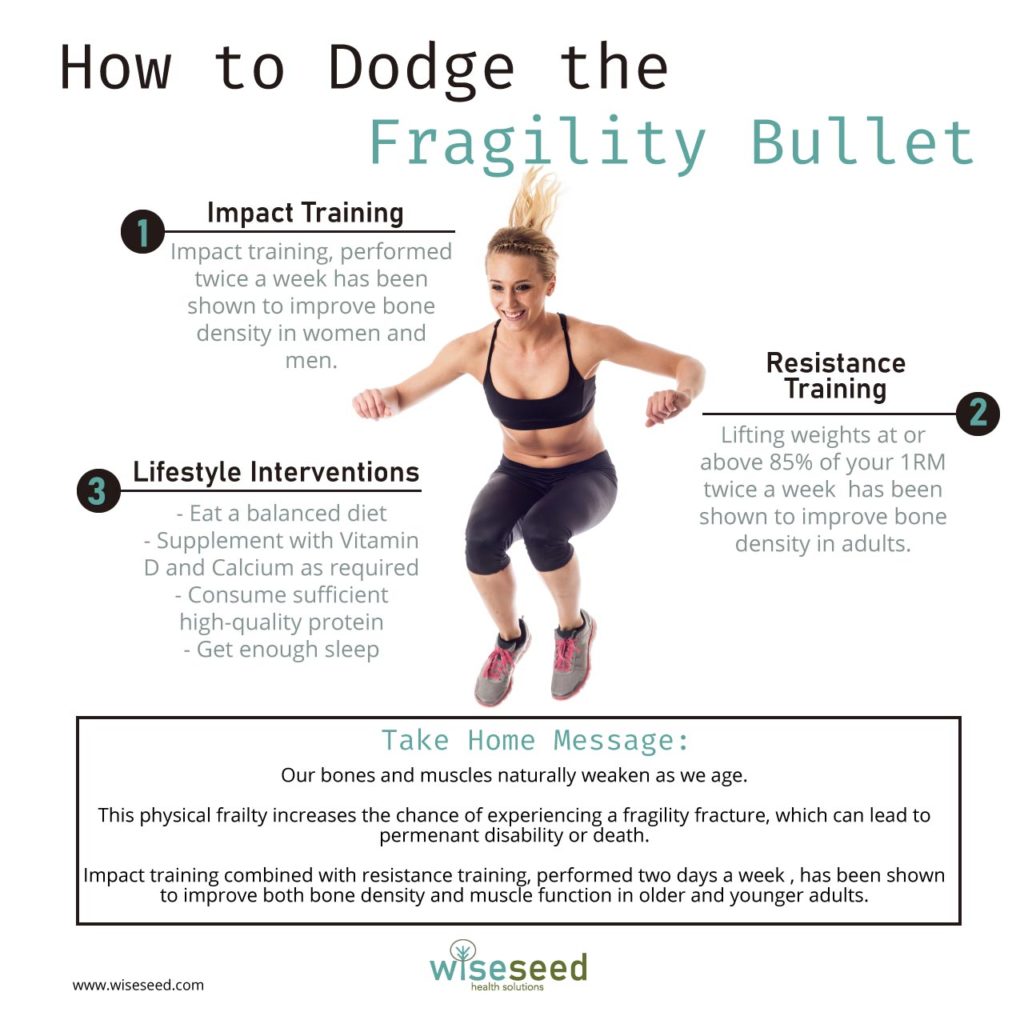How to Dodge the Frailty Bullet

The problem with frailty
After the age of 30, your bones start to become fragile and your muscles become weaker. The combination of fragile bones and weakness increases your chance of suffering a catastrophic fragility fracture as you age.
Obviously, this really sucks. The good news is that you aren’t doomed to suffer frailty. Simple exercise interventions involving resistance and impact training are a proven method to help build muscle and maintain bone strength in adults both young and old.
Lifestyle Tweaks to Support Muscle and Bone Health
For any exercise program to work, you need to put in place the daily habits that support muscle and bone growth. We’ve covered these in detail in previous articles, but here’s a quick recap.
You should consume a balanced diet that includes fruit, vegetables, whole grains, healthy fats, and high-quality protein is essential for maintaining bone density and muscle mass 1. We recommend the Mediterranean Diet 1.
Supplement with vitamin D and calcium if required. It’s recommended that you maintain your serum vitamin D levels at or above 50 nm per litre (ask your Doctor about your serum vitamin D levels). Adequate vitamin D is critical for maintaining both strong bones and healthy muscle function. Adults need to maintain a daily calcium intake of 1,000 to 1,200 mg for preventing bone loss and reducing fracture risk 2.
Adequate protein consumption is essential to support both muscle and bone. However, older adults find it more challenging than young adults to maintain and increase muscle mass, a phenomenon that is known as anabolic resistance 3. Thus, for older adults, more dietary protein is required to overcome anabolic resistance and maximize muscle gains. The recommendation is that if you are an older adult, you should increase your protein intake to around 1.5 g/kg/day, and consume 35-40 g of high-quality protein supplementation after exercise, to maintain and improve your muscle mass and muscle quality 4.
Adequate sleep supports every biological process, including muscle and bone repair. Do your best to consistently get enough quality sleep to support your overall health and your specific recovery and adaptation to exercise.
A Simple Exercise Template for Bone Density and Muscle Mass
As we’ve discussed, it’s the combination of impact training and resistance training that maximally increases bone density in older adults. This is because impact training and lifting weights each impart unique stress onto your bones, which work together to make your bones stronger 5.
Before we dive into the details, we recommend that you go and see your doctor before you begin this type of exercise program. This is especially important if you believe you may currently have low bone density, as there are pharmacological interventions for improving bone density that can only be taken under medical supervision. We believe that you should take full advantage of modern, evidence-based medicine.
The exercise template provided here is a minimal training template that outlines the key exercise types and principles that are clinically proven to improve bone density and muscle strength, muscle mass, and muscle function 6-8.
Feel free to adapt and modify the program to fit into your unique lifestyle and training regime.
Step One: Warm-up.
Warming up prepares your body to work. More importantly, warming up is essential to avoid injury. I perform a series of dynamic warm-up exercises starting with my neck and systematically working through the complete range of motion for each joint. You can also do some light jogs, jump rope, light rowing, or bike work. Make sure your muscles are warm, your joints are limber, and you are ready to train hard.
Step 2: Impact Training
You can find an instructional video on upper body impact exercises here, and for lower body impact exercises here.
Before you commence impact training, perform some easy warm-up sets for the specific body parts targeted for impact training. For example, you could perform 2-3 sets of push-ups (either standard or done on your knees) and 2-3 sets of bodyweight squats.

Then, perform five sets of five reps (5×5) for each impact exercise. I recommend that you alternate between an upper and lower body impact exercise to speed things along. For example, perform five repetitions of explosive push-ups followed immediately by five repetitions of jump squats. Rest, two minutes, and repeat.
It’s essential that you start with the easiest version of the impact exercises and progress very slowly. This is because it takes around eight months before exercise-induced increases in bone density can be detected in humans 6. Increasing bone density is an extremely slow process, therefore you should take your time.
Step 3: Resistance Training
There are two primary considerations for safe and effective resistance training. One, you must develop good lifting techniques. Two, you have to train consistently to experience meaningful results.
The resistance training method that has the strongest clinical support for increasing bone density is lifting heavy barbells 6-8. Five barbell exercises that have been tested in clinical trials (as well as on countless athletes) are the back squat, the deadlift, the shoulder press, the bench press, and the barbell row 6-8.
As these are technical lifts, take time to learn the correct technique for each lift. We recommend that you engage a lifting coach or knowledgeable personal trainer to learn the correct technique from the outset.
Phase 1: Preparatory Phase
The first 2-6 months of resistance training should be devoted to mastering lifting techniques while simultaneously building the muscle and conditioning required for heavy lifting. This can be achieved using three sets of 10 repetitions for each exercise. Simply perform 3 sets of 10 repetitions for the squat, 3 sets of 10 for the deadlift, 3 sets of 10 for the press (either bench or shoulder press), and 3 sets of 10 for the barbell row.
Each repetition should be performed using good form, with the set ending if your technique breaks down. When should you add weight? If on your third set, you can do 12 solids reps using good form, increase the weight in your next workout by a small amount. In most gyms, this is 2.5 kg or 5 pounds.
Don’t forget that you should always perform a specific warm-up for your lifting. For example, perform one set of 10 using the empty bar, one set of 5 using a light weight, and one set of 5 using an intermediate weight, then commence your three working sets. Not only does this warm up the muscles for the movement, it’s also an opportunity to practice and perfect your lifting technique.
Phase II: Strength Building Phase
The strength-building phase is simple. You perform 3-5 sets of five repetitions at a weight of 85% you one rep maximum (1RM) for each exercise.
The first thing you need to do is estimate your 1RM for the squat, deadlift, bench press, and shoulder press. You can either work your way up to a true one rep maximum, using good form, for each exercise. This is best done with an experienced coach or personal trainer.
Alternatively, you can use the following formula to estimate your 1RM.
Estimated 1RM = Weight x Reps x 0.0333 + Weight
For example, if you lifted 30 kg for 10 reps, your estimated 1RM would be:
Estimated 1RM = 30 x 10 X 0.0333 + 30 = 40 kg (rounded up)
Next, take 85% of that number (i.e. 0.85 x 40 = 34 kG) to calculate 85% of your 1RM.
The formula is more accurate the fewer reps you perform. For example, using a 5-rep max gives a more accurate estimate than using a 10-rep max.

Regardless, you will be better served under-estimating than over-estimating your 1RM. If you find it difficult to maintain good form, or you simply fail to make the required reps on your first few cycles, go lighter. Try 80% or even 75% of your 1RM. You’ll soon be adding weight as you get stronger.
You should get 5-10 cycles in before you stop making progress. When this occurs, recalculate your 1RM for each exercise, take 85% and start over.
I personally don’t recommend using a percentage-based approach for barbell or dumbbell rows. Perform rows using a weight that you can perform 3-5 sets of 8-12 reps in good form.
Putting it together
Here’s a simple program to give you an idea about how to implement this type of training. Training two non-consecutive days a week has been shown to improve both bone mass, muscle mass and physical performance in older men and women with low bone density 6-8. Thus, for this example, I’ve set the two non-consecutive training days as Monday and Thursday.
| Monday | Thursday |
| General Warmup | General Warmup |
| Impact Session | Impact Session |
| Lifting Session | Lifting Session |
| – Squats | – Deadlifts |
| – Bench Press | – Seated Shoulder Press |
| – Barbell Row | – Barbell Row |
| Stretch | Stretch |
How to Regulate Intensity
If you’re lifting heavy weights, it’s easy to burn out. This is especially true if you are slightly older, lead a stressful life, or are also doing other types of training. To avoid burnout and reduce injuries, expert lifters and coaches developed an approach that varies training intensity over time, by using cycles or ‘waves’.
Here’s a simple cycle to illustrate the point.
Week One: Easy
Heavy Lifting: Three sets of five at 85% 1RM
Rows: Three sets of 8-12
Week Two: Medium
Heavy Lifting: Four sets of Five at 85% 1RM
Rows: Four sets of 8-12
Week Three: Hard
Heavy Lifting: Five sets of Five at 85% 1RM
Rows: Five sets of 8-12
Week Four: De-load
Heavy Lifting: Three sets of Five at 70% 1RM
Rows: Three sets of Five
Note that the volume of your heavy lifting increases for three weeks. Week four is a de-load week. During this week, training volume decreases, and your focus is on recovery. This four-week cycle represents a single wave.
At the end of the cycle, if you completed all your required reps in good form for one (or more) of your lifts, then add weight for the next wave. You can add weight to some, all, or none of your exercises, depending on how the four-week cycle played out.
Barbells, dumbbells, kettlebells, machines
I believe that barbells, when used correctly, are the safest and most effective way to lift heavy weights to increase bone density. This idea was recently supported in a study of powerlifters, where it was shown that the bone density of drug-free powerlifters positively correlated with how strong they were 9. Powerlifters train primarily (although not exclusively) using barbells.
However, not everyone is able or wants to lift heavy barbells. If this applies to you, simply replace barbells with dumbbells, kettlebells, or machines.
Take Home Message
Recent clinical trials have shown that impact training combined with lifting heavy weights is highly effective for increasing bone density in both young and older adults.
Importantly, women and men with low bone density find this type of training to be enjoyable, engaging, and effective.
Why not give it a try?
To download the free PDF, click on the link below.

References and Further Reading
1 Palomeras-Vilches, A. et al. Adherence to the Mediterranean Diet and Bone Fracture Risk in Middle-Aged Women: A Case Control Study. Nutrients 11, doi:10.3390/nu11102508 (2019).
2 Fagundes Belchior, G., Kirk, B., Pereira da Silva, E. A. & Duque, G. Osteosarcopenia: beyond age-related muscle and bone loss. Eur Geriatr Med 11, 715-724, doi:10.1007/s41999-020-00355-6 (2020).
3 Endo, Y., Nourmahnad, A. & Sinha, I. Optimizing Skeletal Muscle Anabolic Response to Resistance Training in Aging. Front Physiol 11, 874, doi:10.3389/fphys.2020.00874 (2020).
4 Cruz-Jentoft, A. J., Dawson Hughes, B., Scott, D., Sanders, K. M. & Rizzoli, R. Nutritional strategies for maintaining muscle mass and strength from middle age to later life: A narrative review. Maturitas 132, 57-64, doi:10.1016/j.maturitas.2019.11.007 (2020).
5 Lambert, C., Beck, B. R., Harding, A. T., Watson, S. L. & Weeks, B. K. Regional changes in indices of bone strength of upper and lower limbs in response to high-intensity impact loading or high-intensity resistance training. Bone (New York, N.Y.) 132, doi:10.1016/j.bone.2019.115192 (2020).
6 Watson, S. et al. High-Intensity Resistance and Impact Training Improves Bone Mineral Density and Physical Function in Postmenopausal Women With Osteopenia and Osteoporosis: The LIFTMOR Randomized Controlled Trial. J Bone Miner Res 34, 572, doi:10.1002/jbmr.3659 (2019).
7 Harding, A. T. et al. A comparison of bone‐targeted exercise strategies to reduce fracture risk in middle‐aged and older men with osteopenia and osteoporosis: LIFTMOR‐M semi‐randomized controlled trial. Journal of Bone and Mineral Research (2020).
8 Harding, T. A. et al. Bone-targeted Exercise For Older Men With Osteopenia And Osteoporosis: LIFTMOR For Men Trial Preliminary Findings: 849 Board #83 May 29 3:30 PM – 5:00 PM. Medicine & Science in Sports & Exercise 51, 211-211, doi:10.1249/01.mss.0000561140.99133.95 (2019).
9 Ferland, P. M., St-Jean Miron, F., Laurier, A. & Comtois, A. S. The relationship between body composition measured by dual-energy X-ray absorptiometry and maximal strength in classic powerlifting. J Sports Med Phys Fitness 60, 407-416, doi:10.23736/s0022-4707.19.09996-1 (2020).
Disclaimer
The material displayed on this website is provided without any guarantees, conditions or warranties as to its accuracy.
Information written and expressed on this website is for education purposes and interest only. It is not intended to replace advice from your medical or healthcare professional.
You are encouraged to make your own health care choices based on your own research and in conjunction with your qualified practitioner.
The information provided on this website is not intended to provide a diagnosis, treatment or cure for any diseases. You should seek medical attention before undertaking any diet, exercise, other health program or other procedure described on this website.
To the fullest extent permitted by law we hereby expressly exclude all warranties and other terms which might otherwise be implied by statute, common law or the law of equity and must not be liable for any damages whatsoever, including but without limitation to any direct, indirect, special, consequential, punitive or incidental damages, or damages for loss of use, profits, data or other intangibles, damage to goodwill or reputation, injury or death, or the cost of procurement of substitute goods and services, arising out of or related to the use, inability to use, performance or failures of this website or any linked sites and any materials or information posted on those sites, irrespective of whether such damages were foreseeable or arise in contract, tort, equity, restitution, by statute, at common law or otherwise.

Ten Minutes is All You Need
Research has shown that ten minutes of moderate-to-vigorous exercise performed each day is enough to significantly reduce your risk of early death.

The Female Hero
Both men and women have a proven capacity to be heroic. However in many circumstances, even those that incur a high risk of torture and death, there are often more heroic women than men.




